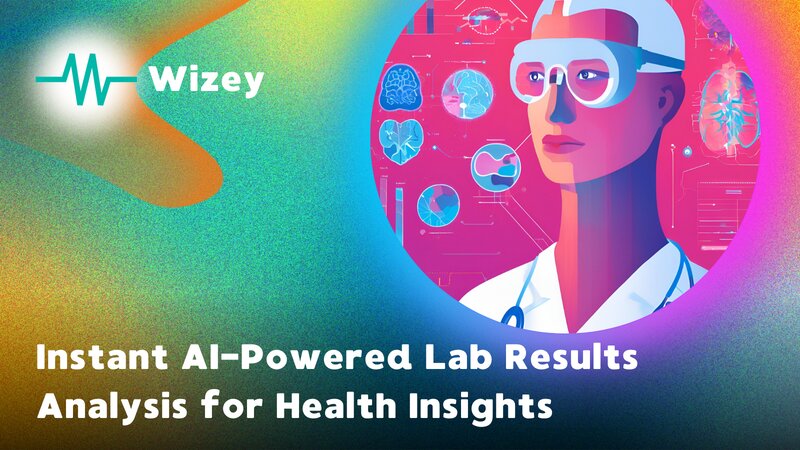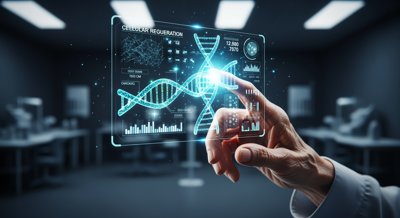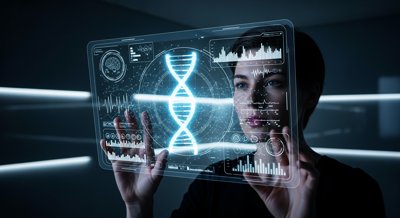🔬 The AI Co-Pilot: How Artificial Intelligence is Translating the Language of Medicine

For decades, the results of a medical test—be it a blood panel or a CT scan—have been delivered in a language spoken fluently only by clinicians. This created a chasm between the data and the patient, a space filled with anxiety and confusion. Today, that chasm is being bridged by one of the most powerful technologies of our time: Artificial Intelligence. AI is not just a futuristic concept; it’s a clinical reality, acting as a sophisticated translator and a tireless analytical partner, fundamentally reshaping our relationship with medical information.
The challenge has always been one of complexity. Medical reports are dense with specialized terminology and quantitative data that, without context, are meaningless to the average person. But what if you had a co-pilot, an intelligent assistant that could translate that complexity into clarity? This is precisely the role AI is beginning to play.
🤖 From Data to Dialogue: AI for the Patient
Leading institutions like Stanford Health Care are already deploying AI systems designed to do one simple, revolutionary thing: explain lab results in plain English. These models, powered by advanced Large Language Models (LLMs), can take a raw lab report and automatically draft a clear, concise summary for the patient. The physician reviews and approves it, transforming a stream of numbers into a meaningful message in a fraction of the time.
This is more than a convenience; it’s a fundamental shift toward patient empowerment. When you can understand the “what” and “why” of your results, you move from being a passive recipient of care to an active participant. This is a core principle we’ve explored in our guide to understanding blood test results.
Direct-to-patient platforms are taking this a step further, allowing you to upload your lab results and engage in a conversation with an AI assistant, asking questions and receiving instant, easy-to-understand explanations.
🔬 The Second Set of Eyes: AI for the Clinician
For doctors, AI is not a replacement, but a powerful collaborator—a “second set of eyes” that never gets tired. The human brain is remarkable, but it is susceptible to fatigue and cognitive bias. An AI, trained on millions of data points, can detect subtle patterns that might elude human perception.
Recent research confirms this potential: a 2024 study published in JMIR Medical Informatics found that AI-driven clinical decision support systems achieved 74.3% overall diagnostic accuracy and, critically, 100% sensitivity for emergency safety cases—meaning they never missed a critical situation requiring immediate intervention. Harvard Medical School research from 2023 showed that AI-driven lab result analysis achieved 92% accuracy in detecting abnormal blood test patterns.
This is having a profound impact across various fields:
- Radiology: AI algorithms are now analyzing medical images with incredible precision. In studies, AI has been shown to improve the detection of lung nodules on CT scans by 29% while reducing reading time by 26%. It can analyze a brain MRI for subtle changes related to multiple sclerosis with 44% greater accuracy than manual review alone.
- Dermatology: When analyzing images of skin lesions, AI models have achieved a level of accuracy in identifying skin cancer that is comparable to that of experienced dermatologists.
- Cardiology: AI can perform automatic measurements on echocardiograms, providing rapid and reproducible data that helps cardiologists assess heart function more efficiently.
By automating routine tasks and flagging potential areas of concern, AI frees up clinicians to focus on what they do best: complex problem-solving, patient communication, and making nuanced clinical judgments.
🧬 Beyond Interpretation: The Future of AI-Driven Health
The role of AI in medicine is rapidly expanding beyond simple test interpretation. We are on the cusp of a future where AI will be integral to the entire healthcare journey:
- Predictive Analytics: By integrating your lab results with your genetic information, lifestyle data, and medical history, AI will be able to predict your risk of developing certain diseases, enabling truly proactive and personalized medicine.
- Treatment Optimization: AI will help doctors choose the most effective treatment plan based on a deep analysis of your unique biological profile, minimizing side effects and maximizing positive outcomes.
- Drug Discovery: AI is already accelerating the development of new medicines by simulating molecular interactions and identifying promising therapeutic targets, a process that once took years.
⚖️ Navigating the New Frontier with Trust and Caution
The promise of AI in medicine is immense, but it comes with a responsibility to proceed thoughtfully. Ensuring data privacy, eliminating algorithmic bias, and maintaining the irreplaceable value of the doctor-patient relationship are paramount. AI is a tool, and like any tool, its value is determined by the wisdom and ethics with which we wield it. There are many myths about AI in medicine, but the reality is a story of collaboration, not replacement.
The era of opaque, intimidating medical data is coming to an end. In its place is a future of clarity, collaboration, and empowerment, where technology serves not to distance us, but to bring us closer to understanding the intricate, beautiful complexity of our own health.
Choosing the Right AI Tool: Not all AI solutions are created equal. When it comes to medical lab interpretation, purpose-built medical AI systems like Wizey differ fundamentally from general chatbots like ChatGPT or Claude. Medical-grade AI uses structured knowledge graphs trained on validated clinical data, while general AI relies on statistical patterns that can hallucinate. Understanding these architectural differences between AI models is crucial for making informed decisions about your health.





